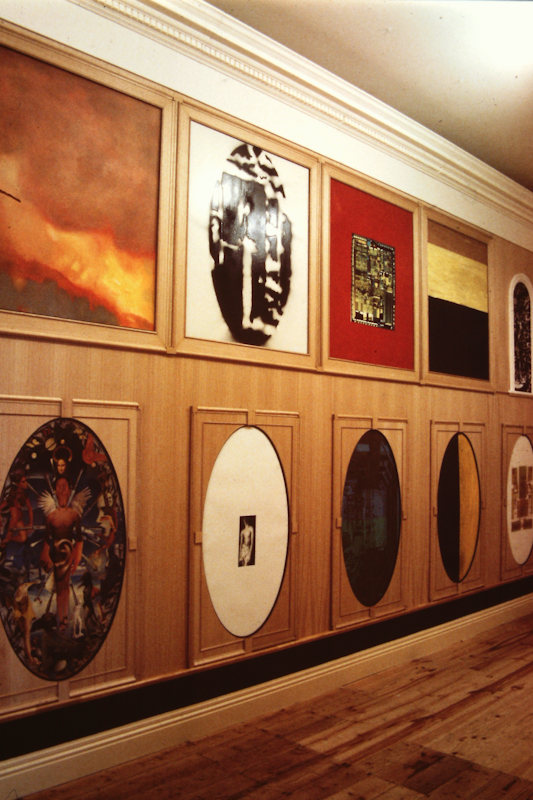
9 December -
28 January 1989
200 Gertrude Street
200 Gertrude Street, FitzroyExhibited over the summer of 1988–1989 at 200 Gertrude Street, Vasari revisited: a Kunstammer in Melbourne presented the works of twenty-four artists within an architectural and thematic reconstruction of the Florencian Studiolo of Francesco I, housed in Tuscany, with its contemporary Melbourne-based replica designed in collaboration with architect David Brand.
The idea to reproduce the Studiolo of Francesco I, both architecturally and thematically, came from a desire to present works of art within a specific and self-contained context. Today, when an artist is commissioned to produce a piece of work, fundamental problems arise. The work must be conceived according to traditional practice: intention, propriety and scale are pre-determined to a certain degree. The four-fold division of the walls into the four Platonic elements of Earth, Air, Fire and Water of the original Vasari scheme has been maintained, and the artists involved were free to choose one or two elements on which to base their work. In commissioning the works for this exhibition, emphasis was directed away from the style and subjects of the late Mannerist paintings of the original Studiolo, and the artists were encouraged to incorporate the commission within their normal working practices.
The reconstruction of the Studiolo itself is a collaborative design with the architect David Brand. It follows precisely the dimensions and plan of the original structure. The existing Studiolo in Florence is in fact a reconstruction dating from the early twentieth century. It uses wooden panelling to replace the lost panelling to replace the lost Mannerist stucco decoration. This wooden surface mimics true masonry construction, and provided the basis for our design. The wooden detailing of our walls has been either modified from the original or completely re-designed. The original vaulted ceiling was omitted from the design due to lack of space. It was at no time a consideration to reproduce the Studiolo in a spurious 'contemporary' style.
Vasari's for the Studiolo is an extraordinary synthesis - an imprint of the perceived world ordered within the metaphor of the Platonic cosmos. This exhibition is an attempt to open channels of symbolic thought, to establish connections between man and the physical world, and to stimulate through analogy the vast areas within our society which have become immobilized by reductive thinking. It is here that Mallarmé's image of the heavens reflected in the mirror finds its place.
– Michael Graf











